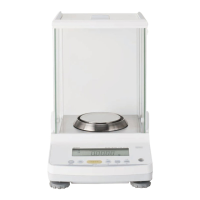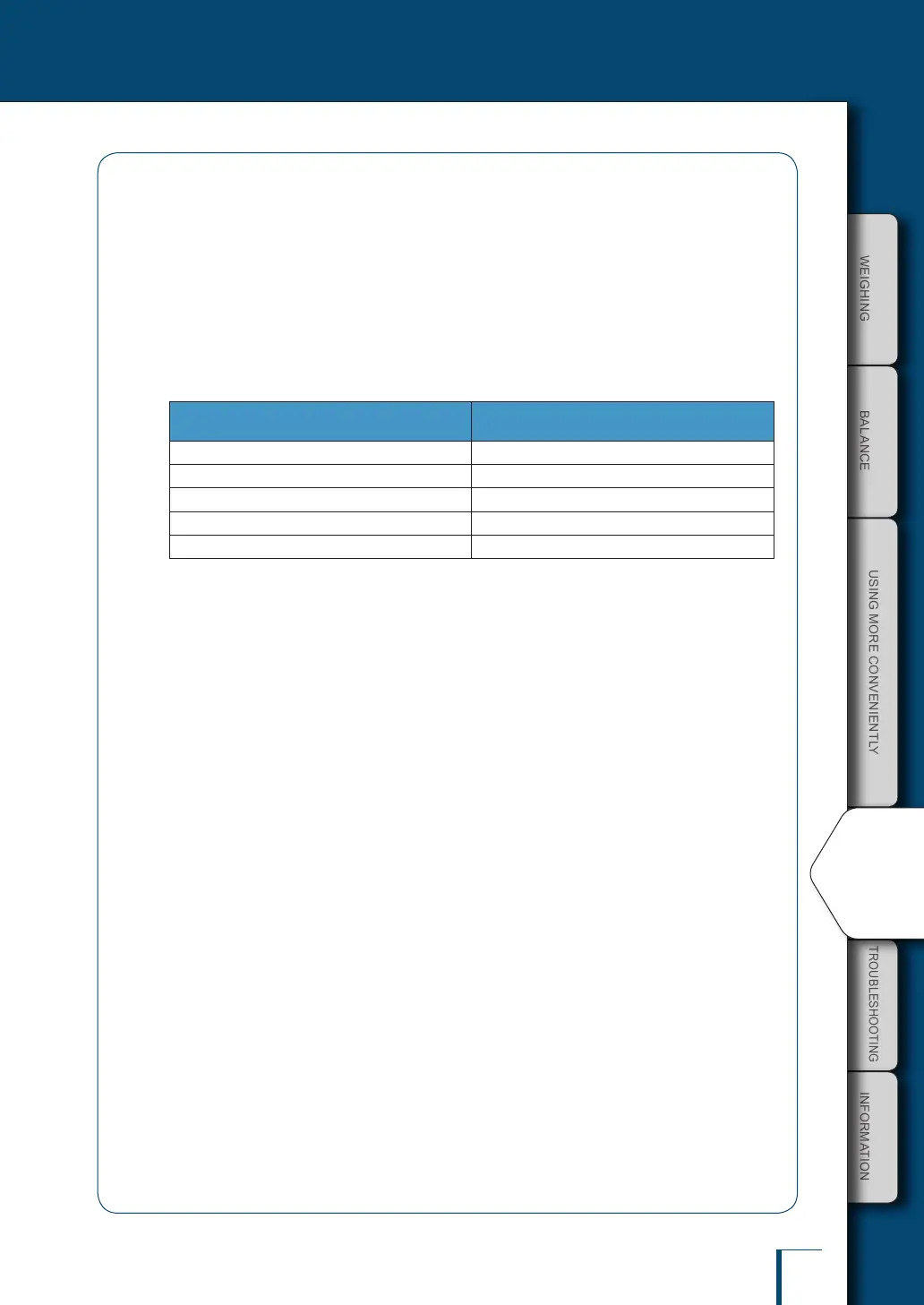BEFORE
WEIGHING
USING THE
BALANCE
USING MORE CONVENIENTLY
メメメメメメ
TROUBLESHOOTING
FOR YOUR
INFORMATION
MAINTENANCE
137
Selecting the calibration weights to be used
Now you must select the "indicated weight" of the weight to be used (how many grams it should
be).
The weights of weights are set with the smallest at 1 mg and progressing in the sequence 1 mg, 2
mg, 5 mg, ... as shown below.
1 mg, 2 mg, 5 mg, 10 mg ... 1 g, 2 g, 5 g, 10 g, 20 g, 50 g, 100 g ...
When selecting a weight to be used for calibrating a balance, you are recommended to select one
that is close to the weighing capacity of the balance.
The table below shows the recommended calibration weights to be used for balances with
different weighing capacities.
Weighing Capacity of Balance
Recommended Weight of Weight for
Calibration
62 g 60 g (50g +10g)
82 g 80 g (50g + 20g +10g)
120 g 100 g
220 g 200 g
320 g 300 g (200 g + 100 g)
For information on the range of weights that can be used to calibrate balances (i.e. values that can
be entered as the weight value) see "Calibration range with external weights" (^ page 146) in
"Specications".
It is also possible to calibrate a balance with a weight that is not close to the weighing capacity of
the balance.
However, if you do this, when weighing in the range that exceeds the weight value that was used
for calibration, the performance may deteriorate proportionately (the instrumental error may
become larger).

